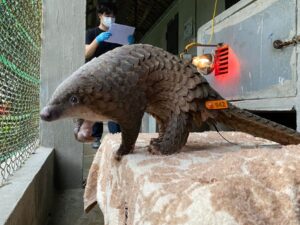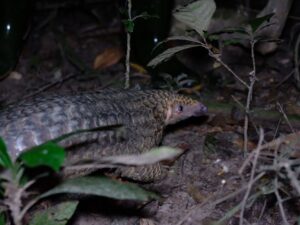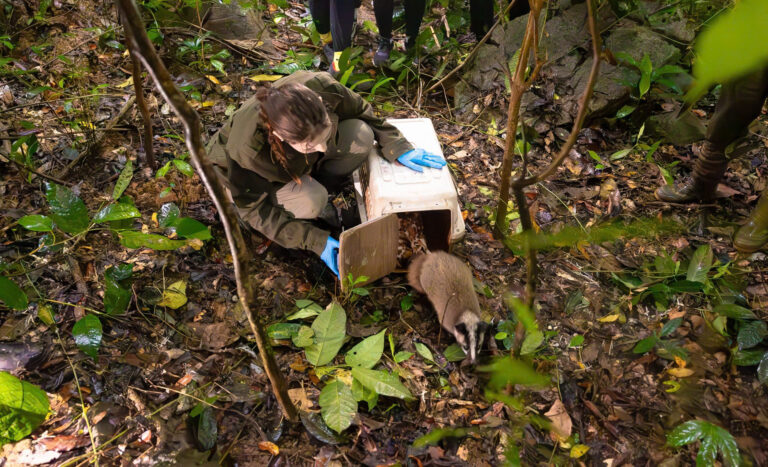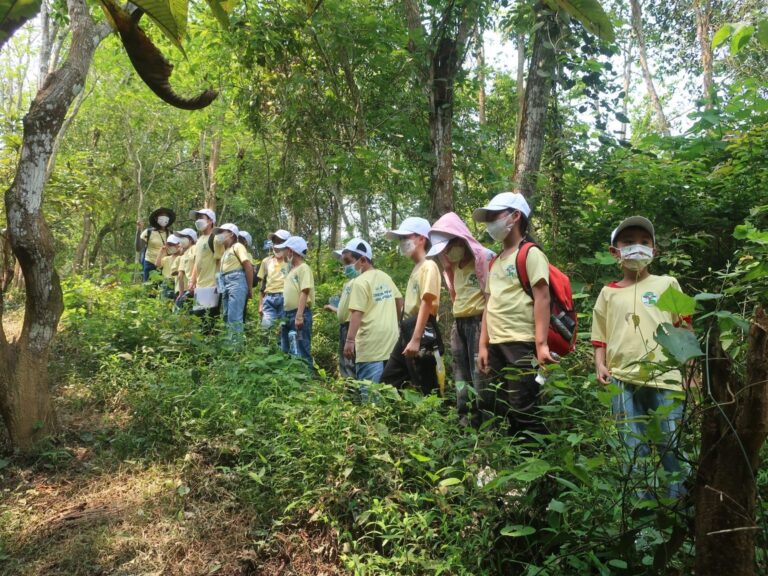SWV’s latest release trip took place on 14 January 2023. In collaboration with Cuc Phuong and Pu Mat National Parks, we were able to successfully release seven sunda pangolins and eight bengal monitors.
The 1,500 kilometre journey
This journey from the north of Vietnam to the south starts in the early morning hours in Cuc Phuong National Park, where six previously rescued sunda pangolins are being prepared for a long bus ride and transferred to their transport boxes. The animals are accompanied by a trained release team consisting of one veterinarian, one headkeeper, as well as government officials, two drivers, and two professional volunteers.

One pangolin was attached with a radio tracking device for post-release research. Photo ©SVW
Before departure, the team packs all necessary items to provide the best possible animal care, such as special food, VET-equipment and transport boxes. The team has to make a stop on the way to pick up more animals that are about to be released too.This leg would usually take about five hours, but it is necessary to take breaks at least every four hours to check on the animals and to provide treatment for them, if needed.
Luckily there was the opportunity to meet up with staff from Pu Mat Rescue Center on the road. Without having to deviate from our original route, we are able to pick up one more Sunda pangolin and eight bengal monitors, while maintaining a fast and safe way of transport to their new natural habitat in a protected area.
The animal’s journey comes to their final stop after approximately 40 hours of travelling. Before starting the final release in the forest, we feed and check the animals one last time and then start driving into the protected areas where the animals will be released. In the forest, we are accompanied by members of the Anti poaching and research team and by local forest rangers.
Seven Sunda pangolins and eight bengal monitors are home
For both the bengal monitors and the pangolins, we scouted designated release areas that are similar to their preferred natural habitat and far off the national park roads. These release locations were carefully considered and analysed by the research team.

Be safe, our little friend. Photo ©SVW|Frederik.
After the locked gates of the transport boxes were opened and the wild animals are finally free to roam around in nature, we continue to follow the release protocol and note down the exact locations of the release area on GPS, so we are able to track certain animals again and to use suitable previous release locations for future animal releases.
Post-release tracking
With this step, the release trip itself ended, but the work in the field is not done yet. We take the night to rest and go out into the forest again with members of SVW’s research team to try and track one of the released pangolins, which is equipped with a radio tracker. With the use of radio tracking, the research team is able to detect the pangolin’s position from a distance of a few hundred meters.
![]()
Evaluating the effectiveness of pangolin post-release using radio tracking. Photo ©SVW
Unfortunately, this method only works in the relatively close vicinity of the animal, especially when the individual is underground or in a dense forest. So we track down the last known position of the animal, which we noted down on a GPS device and start tracking from this location on. The goal of this method is to create an estimated trajectory of the pangolin’s path and to follow this trajectory until we are able to detect the pangolin’s position within a close distance of only a few meters.
Fortunately, we are able to detect a radio signal quite quickly and start tracking down this signal through the thick vegetation of the forest. This time, the signal is very strong, meaning the pangolin must be nearby. In this case, the strongest signal is found around a certain kind of tree which pangolins often use as shelter, as there are plenty of sufficient food and water sources around. While noting down this location on the GPS device, we could confirm that this location was in fact only 50 meters away from the original release site.
A successful release
The collaboration between different teams within SVW to release animals back into the wild, is likely to be a success this time. Apparently, the chosen release site was suitable for the animals and it seems like the pangolin survived the first night in nature without any serious complications.
A big relief and success for Save Vietnam’s Wildlife and for pangolin conservation.
By Frederik



